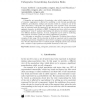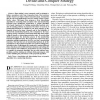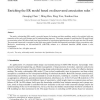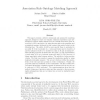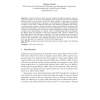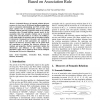DATAMINE
2002
14 years 2 months ago
2002
Cubegrades are generalization of association rules which represent how a set of measures (aggregates) is affected by modifying a cube through specialization (rolldown), generaliza...
CIB
2002
14 years 2 months ago
2002
The web log data embed much of web users' browsing behavior. From the web logs, one can discover patterns that predict the users' future requests based on their current b...
JIS
2007
14 years 2 months ago
2007
With the rapid increase in the use of databases, the problem of missing values inevitably arises. The techniques developed to effectively recover these missing values should be hi...
TEC
2008
14 years 2 months ago
2008
Data mining is most commonly used in attempts to induce association rules from transaction data. Most previous studies focused on binary-valued transaction data. Transaction data i...
ISCI
2007
14 years 2 months ago
2007
The entity–relationship (ER) model, a powerful means for business and data modeling, needs to be enriched with new semantics as the real world changes and its understanding impr...
IJSWIS
2007
14 years 2 months ago
2007
This paper presents a hybrid, extensional and asymmetric matching approach designed to find out semantic relations (equivalence and subsumption) between entities issued from two ...
ML
2006
ACM
14 years 2 months ago
2006
ACM
The application of Inductive Logic Programming to scientific datasets has been highly successful. Such applications have led to breakthroughs in the domain of interest and have dri...
KAIS
2008
14 years 2 months ago
2008
Abstract. Quantitative Association Rule (QAR) mining has been recognized an influential research problem over the last decade due to the popularity of quantitative databases and th...
JUCS
2008
14 years 2 months ago
2008
Abstract: Adaptive behavior and learning are required of software agents in many application domains. At the same time agents are often supposed to be resource-bounded systems, whi...
JSW
2008
14 years 2 months ago
2008
Automatic discovery of semantic relations between resources is a key issue in Web-based intelligent applications such as document understanding and Web services. This paper explore...
